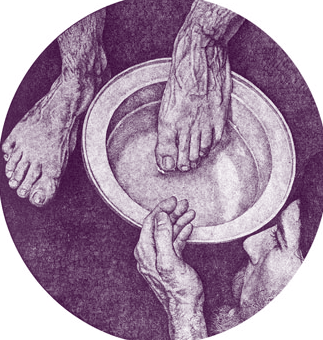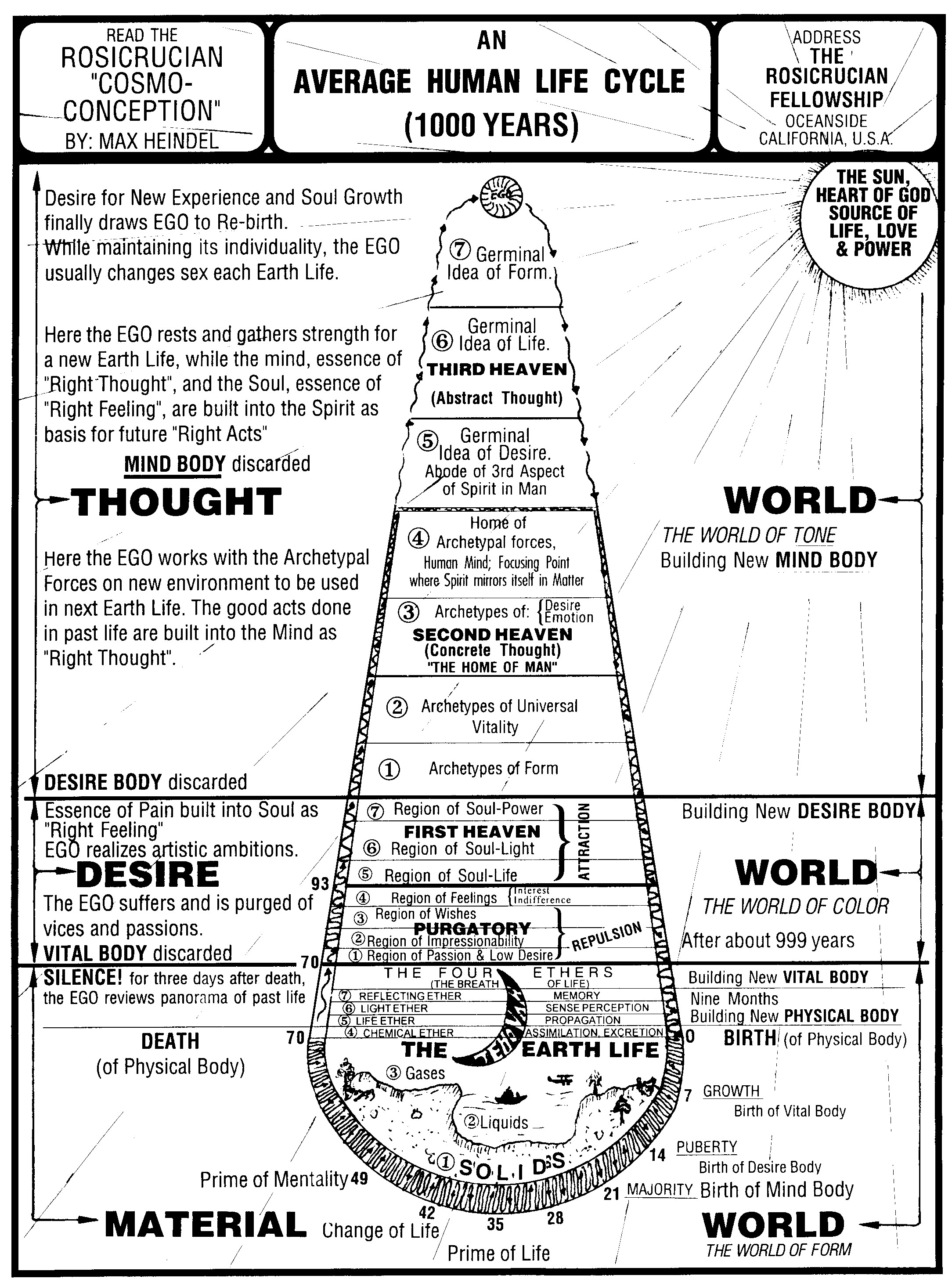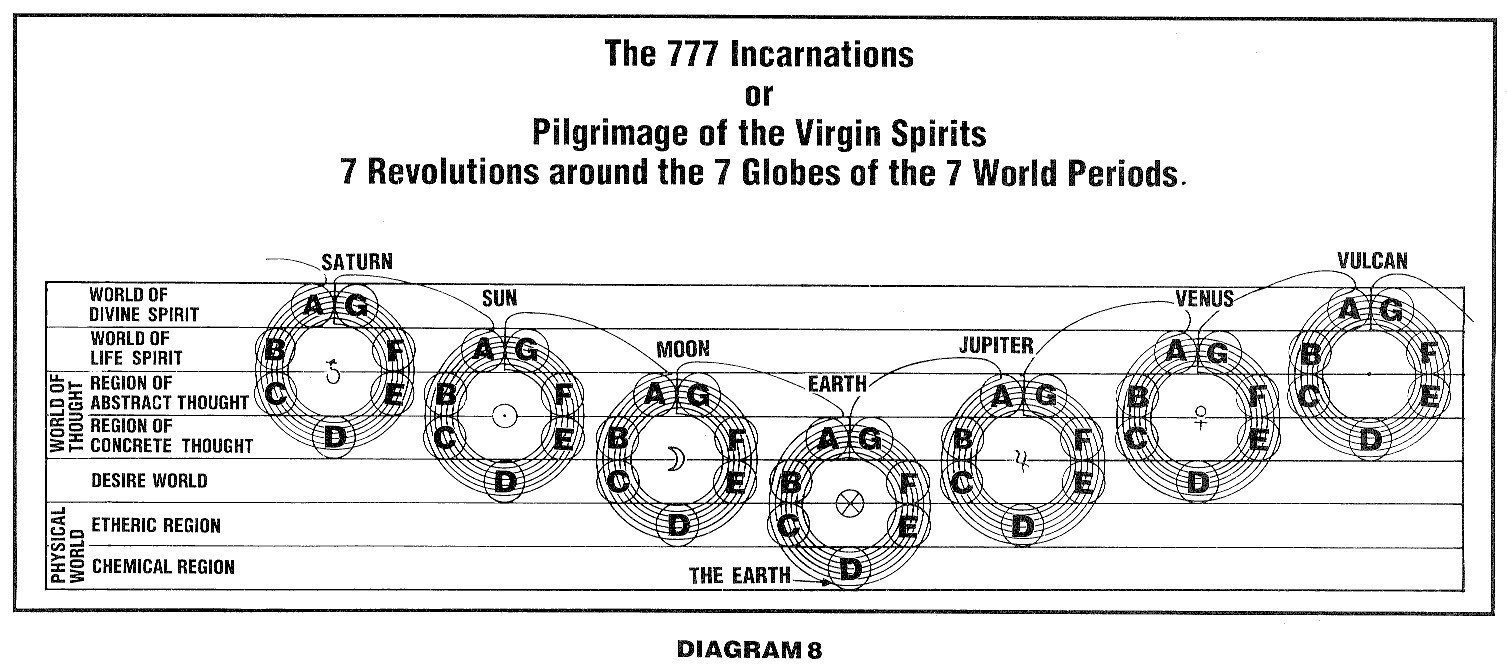
| rosicrucianU.com | ||
| Simplified Scientific Christianity |

References: Genesis 6, 7, 8, 9; Exodus 3-14, 25-40; Hebrews 9.
The Brazen Laver was a large basin which was always kept full of water. It is said in the Bible that it was carried on the backs of twelve oxen, also made of brass, and we are told that their hind parts were toward the center of the vessel. It appears from the memory of nature, however, that these animals were not oxen but symbolical representations of the twelve signs of the zodiac. Humanity was at that time divided into twelve groups, one group for each zodiacal sign. Each symbolic animal attracted a particular ray, and as the holy water used in Catholic churches is magnetized by the priest during the ceremony of consecration, so also the water in this Laver was magnetized by the divine Hierarchies who guided humanity.
There can be no doubt concerning the power of holy water prepared by an individual of strong and magnetic personality. It takes on or absorbs the effluvia from his vital body, and the people who use it become amenable to his rule in a degree commensurate to their sensitiveness. Consequently the Brazen Lavers in the ancient Atlantean Mystery Temples, where the water was magnetized by divine Hierarchies of immeasurable power, were a potent factor in guiding the people in accordance with the wishes of these ruling powers. Thus the priests were in perfect subjection to the mandates and dictates of their unseen spiritual leaders, and through them the people were made to follow blindly. It was required of the priests that they wash their hands and feet before going into the Tabernacle proper. If this command was not obeyed, death would follow immediately on the priest's entering into the Tabernacle. We may therefore say that the keyword of the Brazen Laver was "consecration."
The Brazen Laver is the symbol of sanctification and consecration of the life to service. As Christ entered upon His three year ministry through the baptismal waters, so the aspirant to service in the ancient Temple must sanctify himself in the sacred stream which flowed from the Molten Sea. And the Mystic Mason endeavoring to build the temple "without sound of hammer" and to serve therein must also consecrate and sanctify himself.
Having mounted the first steps upon the path the aspirant stands in front of the veil which hangs before the Mystic Temple. Drawing this aside he enters into the East Room of the sanctuary, which was called the Holy Place. No window or opening of any sort was provided in the Tabernacle to let in the light of day, but this room was never dark. Night and day it was brightly illuminated by burning lamps.
Its furniture was symbolical of the methods whereby the aspirant may make soul growth by service. It consisted of three principal articles: the Altar of Incense, the Table of Shewbread, and the Golden Candlestick.
The Golden Candlestick was placed on the south side of the Holy Place so as to be to the left of any person who stood in the middle of the room. It was made entirely of pure gold, and consisted of a shaft or principal stem, rising upright from a base, together with six branches. These branches started at three different points on the stem and curved upward in three partial circles of varying diameter, symbolizing the three periods of development (Saturn, Sun, and Moon Periods) which man went through before the Earth Period, which was not half spent. This latter period was signified by the seventh light. Each of these seven branches terminated in a lamp, and these lamps were supplied with purest olive oil, which was made by a special process. The priests were required to take care that the Candlestick was never without a light. Every day the lamps were examined, dressed, and supplied with oil so that they might burn perpetually.
When the priest stood in the Center of the East Room of the Tabernacle, the Seven-branched Candlestick was on his left, toward the south. This was symbolical of the fact that the seven light-givers or planets which tread the mystic circle dance around the central orb, the Sun, and travel in the narrow belt comprising eight degrees on either side of the Sun's path, which is called the zodiac. "God is Light," and the "Seven Spirits before the Throne" are God's ministers; therefore they are messengers of light to humanity. They have guided us on the path of evolution. Furthermore, as the heavens are ablaze with light when the Moon in its phases arrives at the "full" in the eastern part of the heavens, so also the East Room of the Tabernacle was filled with Light, indicating visibly the presence there of God and His seven Ministers, the Star Angels.
Among the chief articles in the East Room of the Temple is the Table of Shewbread. Upon this table there were two piles of shewbread, each containing six loaves, and upon the top of each pile there was a little heap of frankincense. The aspirant who came to the Temple door "poor, naked, and blind" has since been brought to the light of the Seven-branched Candlestick, obtaining a certain amount of cosmic knowledge, and this he is required to use in the service of his fellow man; the Table of Shewbread represents this in symbol.
The God-given grains of wheat in the twelve loaves represent the opportunities of soul growth given by God, which come to all through the twelve departments of life represented by the twelve houses of the horoscope, under the dominion of the twelve divine Hierarchies known through the signs of the zodiac. But it is the task of the Mystic Mason, the true temple builder, to embrace these opportunities, to cultivate and nourish them so that he may reap therefrom The Living Bread which nurtures the soul.
We do not, however, assimilate our physical food in toto; there is a residue, a large proportion of ash, left after we have amalgamated the quintessence into our system. Similarly, the shewbread was not burned or consumed before the Lord, but two small heaps of frankincense were placed on the two stacks of shewbread, one on each pile. This was conceived to be the aroma thereof, and was later burned on the Altar of Incense. Likewise the soul sustenance of service gathered daily by the ardent Mystic Mason is thrown into the mill of retrospection* at eventide when he retires to his couch and performs there this scientific exercise.
Let the Mystic Mason take particular note, however, that the loaves of shewbread were not the musings of dreamers; they were not the product of speculation upon the nature of God or light. They were the product of actual toil, of orderly systematic work, and it behooves us to follow the path of actual service if we would garner treasure in heaven. Unless we really work and serve humanity, we shall have nothing to bring, no bread to "shew," at the Feast of the Full Moon; and at the mystic marriage of the higher to the lower self we shall find ourselves minus the radiant golden soul body, the mystic wedding garment, without which the union with Christ can never be consummated.
At the Altar of Incense, incense was offered before the Lord continually, and the priest who stood before the altar ministering was at that time looking toward the Mercy Seat over the Ark, though it was impossible for him to see it because of the second veil which was interposed between the first and second apartments of the Tabernacle, the Holy Place and the Holy of Holies. Incense symbolizes the extract, the aroma of the service we have rendered according to our opportunities; and just as the sacrificial animal upon the Brazen Altar represents the deeds of wrong doing committed during the day, so the incense burned upon the Golden Altar, which is a sweet savor to the Lord, represents the virtuous deeds of our lives.
In the westernmost end of the Tabernacle rested the "Ark of the Covenant." It was a hollow receptacle containing the Golden Pot of Manna, Aaron's Rod that budded, and the Tables of the Law which were given to Moses. While this Ark of the Covenant remained in the Tabernacle in the Wilderness, two staves were always within the four rings of the Ark so that it could be picked up instantly and moved, but when the Ark was finally taken to Solomon's Temple, the staves were taken out (II Chronicles 5:7-9) This is very important in its symbolical significance. Above the Ark hovered the Cherubim, and between them dwelt the uncreated glory of God. "There," said He to Moses, "I will meet with thee, and I will commune with thee from above the mercy seat, from between the two cherubim which are upon the ark of the testimony."
The glory of the Lord seen above the Mercy Seat was in the appearance of a cloud. The Lord said to Moses, "Speak unto Aaron thy brother, that he come not at all times into the holy place within the veil before the mercy seat, which is upon the ark; that he die not: for I will appear in the cloud upon the mercy seat." This manifestation of the divine Presence was called the Shekinah Glory. Out of this cloud the voice of God was heard with deep solemnity when He was consulted on behalf of the people.
As the Cherubim and the Father Fire which hover above the Ark represent the divine Hierarchies which overshadow mankind during his pilgrimage through the wilderness of matter, so the Ark which is found there represents man in his highest development. When the aspirant stood at the eastern gate as a child of sin, the law was without as a taskmaster to bring him to Christ. But when through sacrifice and service he has finally arrived at the stage of evolution represented by the Ark in the western room of the Tabernacle, the Tables of the Law are Within. He has then become emancipated from all outside interference with his actions; not that he would break any laws, but because he works with them.
*Esoteric science teaches that everything that has ever happened has left behind it a picture in the Reflecting Ether, World of Thought, and the World of Life Spirit (spiritual worlds which we do not contact through the five senses). Ability to read in these regions is a latent faculty possessed by all humanity and will eventually be acquired by everyone. The exercise of Retrospection consists of going over the events that have occurred during the day, beginning in the evening and tracing them back to the morning, and giving praise and blame to oneself where due.
(You are welcome to e-mail your answers and/or comments to us. Please be sure to include the course name and Independent Study Module number in your e-mail to us. Or, you are also welcome to use the answer form below.)
1. Describe the Brazen Laver as shown in the memory of nature and state its significance.
2. Name the three principal articles of furniture in the East Room.
3. Describe the Golden Candlestick and state its symbolical meaning.
4. What is the symbolical representation of the Table of Shewbread?
5. What is the value of the retrospection exercise to the Mystic Mason?
6. Of what is incense the symbol?
7. What does Ark of the Covenant represent?

|

|

|
|
|
Contemporary Mystic Christianity |
|
|
This web page has been edited and/or excerpted from reference material, has been modified from its original version, and is in conformance with the web host's Members Terms & Conditions. This website is offered to the public by students of The Rosicrucian Teachings, and has no official affiliation with any organization. | Mobile Version | |
|